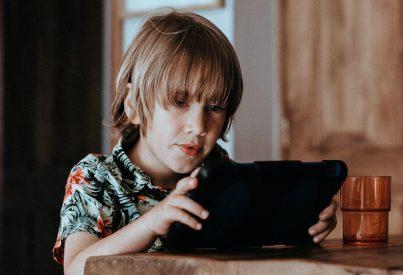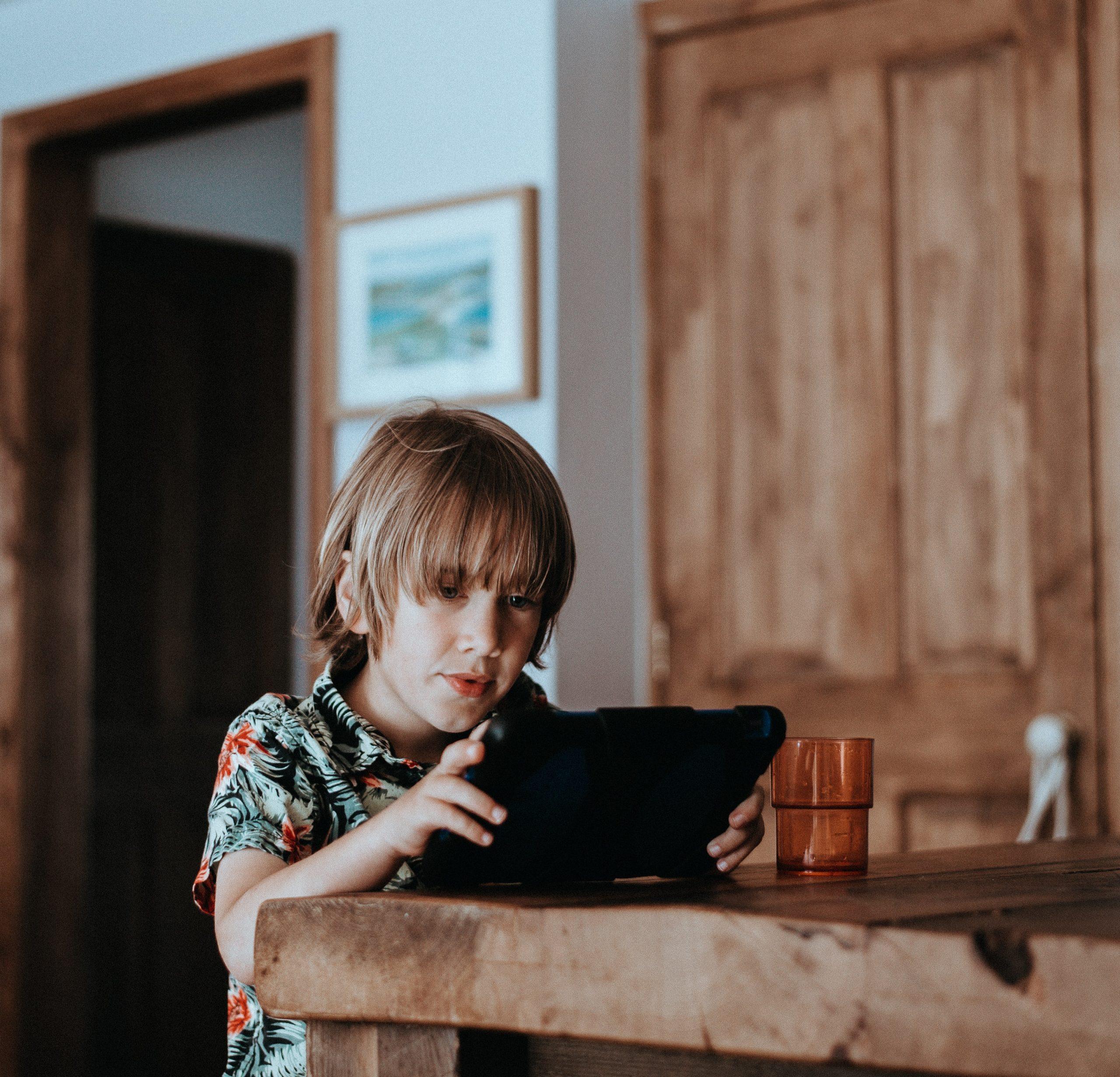“Since I have to work and have no childcare during the lockdown, my kids are on the ipad and computer nonstop. It definitely makes them more irritable and aggressive. I think they’re actually bored at this point, but they’re also addicted. They howl when I turn it off and they can’t seem to find anything else to do, even on weekends.”
Sound familiar? In the beginning of the pandemic, with parents trying to work and supervise kids at the same time, screens were the obvious answer. Given the general feeling of being in an emergency situation, worrying about the increased screen time was low on the list.
Months later, as we realize that this is a marathon, not a sprint, many parents are noticing the change in their children and wondering how to regain the lost ground and get kids playing independently.
But if parents are still trying to work at home with no childcare, some screen usage is probably unavoidable. The question is how to find the sweet spot, with some educational screen activities to keep kids riveted while we work, some fun alternatives to screens that will keep children occupied as much as possible, and of course some time for your child to play video games or watch their favorite movie over and over.
Unfortunately, getting kids started again on independent play can be a challenge. Most screen activities are so compelling that kids start to lose the ability to find other things interesting. The more screen time they have, the more their focus, creativity, and initiative seem to atrophy, and the less ability they have to lose themselves in independent play. Not to mention that lots of screen time in childhood is associated with more aggressive behavior, a higher risk of childhood obesity, and lower self esteem. Repeated screen use can even change the way the brain develops. For instance, cartoons, with their quick cuts, have been shown to reduce the attention spans and other executive functions of preschoolers.
Luckily, there are ways to start weaning your child away from screens and into other activities, and your child’s brain and mood will respond positively. Here’s how to start digging yourself out of the screen trap to create a more sustainable way to occupy your kids, even while you’re working at home during pandemic lockdown.
Photo by Annie Spratt on Unsplash
1. Start by setting a reasonable goal.
For instance, if your child is using screens eight hours a day, don’t expect to reduce that to one hour. Start by aiming for six. The first change is the hardest, so plan to make another reduction once this one has successfully settled your family into a new routine.
2. Brainstorm a list of alternate activities.
Sit down with your child and have a heart to heart about all the screen time. Be careful not to blame. Instead, take responsibility for having allowed more screen time than is good for your child. Talk about screens the way you would sweets — lots of fun, but a special treat, not something to indulge in all day.
Ask your child what else he or she might like to do instead for some of the time that has been used on screens. Brainstorm some fun ideas that your child or children can do on their own and make a list with your child.
Here’s an age-by-age guide of over 100 ideas that children can do with minimal supervision from you, to get you and your child inspired.
3. Prioritize helping your child learn to play independently.
Research shows that children who regularly lose themselves in play develop qualities that will help them master whatever they pursue for the rest of their lives, including increased capacities to problem-solve, persevere, focus, manage frustration, and use their imaginations to create.
So don’t feel guilty about asking your child to play on their own. It’s good for them! But if your child isn’t used to playing independently, you’ll need to help them develop that skill gradually. Here’s a whole article on how: Supporting Your Child To Play Independently
4. Choose high quality screen experiences as much as possible.
Not all screen time is created equal. For instance, while social media usage has been shown to increase anxiety in people of all ages, following along with an exercise class online is good for the body and brain. Work with your child to come up with a list of screen activities that will keep your child riveted when you need to work, but that have educational value. There are unlimited resources at this point. For instance:
- Scholastic has daily educational activities for children of all ages, beginning with preK.
- Audible has free audio books for kids to stream in multiple languages.
- Kids’ Yoga and other exercise classes are readily available online.
- The Boston Children’s Museum (and many other museums) have virtual offerings for kids.
- Zooborns has webcams of baby animals (as do many zoos and aquariums.)
- Brooklyn Game Lab has a daily Dungeons and Dragons game.
- Writopia Lab has terrific online writing workshops for kids ages 7 to 18.
- Mo Willems teaches kids drawing on Thursdays.
- Tilt Parenting has put together a terrific list of online resources and ideas.
Discuss with your child how much time is reasonable for these activities, versus video games and TV shows.
4. Write an agreement about your new screen time hours.
Agree on how much screen time can be used for video games or rewatching Frozen, versus exercise classes or a writing workshop. Shake on your agreement and sign it together. (Young children can mark an X.)
5. Make a schedule/chart.
Agree on a written daily schedule, with screen time AFTER reading time, outdoor time, and free play. Any time you’re WITH your kids, such as mealtime, should be engagement time, not screen time. All kids should help with housework activities such as meals, but they’ll need you to keep them on track for that. Plan to take regular breaks throughout your work day to connect with your child and smooth the transition from one activity to the next.
Have your kids make a chart that they can use to check off each period of the day before moving on to the next.
Every morning, ask your kids what activities they think they’ll try during their free play time that day. Make yourself accessible to whatever degree is possible during the new non-screen time activities (at least initially) to help kids troubleshoot any issues that come up, particularly between siblings.
6. Expect an adjustment period.
Your child has been using screens to fend off boredom, but that’s not all. Screens are an easy way to distract ourselves from all those uncomfortable feelings during a pandemic: Disappointment. Yearning. Sadness. Anxiety. Fear. Annoyance. Anger.
So be sure to build in antidotes, like daily roughhousing, to help kids work through emotions. And you can expect a certain amount of volatility from your child as they begin spending less time with screens, so ratchet up your patience level and the one on one time.
But after this transitional time period, you’ll see your child becoming less irritable and aggressive. You’ll notice more initiative, self-discipline and focus when they play. And best of all, you’ll see your child developing their inner life and discovering who they are by playing, learning and engaging with the world, instead of losing themselves to a screen.
Dr. Laura Markham is the author of Peaceful Parent, Happy Siblings: How to Stop the Fighting and Raise Friends for Life and Peaceful Parent, Happy Kids: How to Stop Yelling and Start Connecting and
more, – you can visit her at ahaparenting.com.
Purchase her books here;
Article reprinted with permission by the author.




